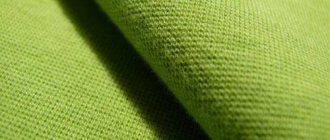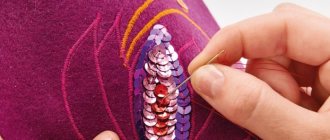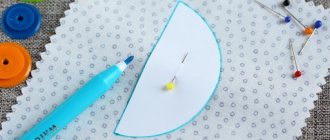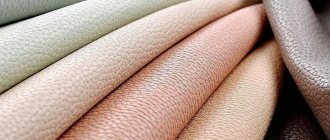What polymer materials are is precisely determined by chemists. The term “polymer” itself means plastic and is used to make plastic products for daily use. We use products made from such raw materials at home and at work. They surround us in public transport (cars, planes, train cars). Modern industry has invented new raw materials, the structure of which includes natural and synthetic components.
Basic physical properties
A distinctive feature of this material is that its chemical composition includes a substance with high molecular weight chains that repeat at a given frequency. Thanks to this, rubber (rubber) has become the most widespread, distinguished by its elasticity and increased abrasion resistance. It and other types not only have elastic properties, but also have other important qualities:
- • Low thermal conductivity. As an example: if you put a pan on an open fire, the iron alloy will heat up, but the handles made of plastic will remain cold.
- • High temperature coefficient of linear expansion, which ranges from 70 to 200 10-6 per degree. The molecular structure has the properties to increase linear dimensions several times more than metal at the same t.
- • Due to its flexibility, recently technologists have developed a technique for applying a thin layer of polymer to metal parts of products to protect them from corrosion.
- • Tensile strength is inferior to that of iron. To improve it, special components are added, due to which new varieties of material are obtained.
- • When designing and manufacturing the product, low temperature heating coefficient is taken into account. The recommended threshold is less than 80 degrees. Otherwise, the physical properties will change, which will lead to a decrease in strength.
- • It ignites quickly in a fire, releasing toxic substances.
- • Due to the reduced coefficient of friction, no defects (scratches, chips) remain on the surface.
- • Has electrical insulating properties. Since it does not conduct current, all tool handles are covered with plastic.
- • Resistant to deformation under prolonged load, capable of restoring its original shape.
A little history
Polypropylene is a fairly “young” material, born a little over 60 years ago. Now it is difficult to imagine how humanity could manage without it.
It all started with the fact that in 1953, German chemist Karl Ziegler developed a method for synthesizing polymer compounds from propylene gas. A few years later, a group of Italian scientists led by Professor Giulio Natta improved the system, speeding up the process of obtaining the material using catalysts.
By the beginning of the 60s of the last century, several factories were built in Europe and the USA to produce the new product. Since 1965, such enterprises have started operating in Russia. It is noteworthy that domestic chemists used their own innovative technology.
Since then, polypropylene and products made from it have confidently taken second place in the world among all plastics after polyethylene. Currently, improved catalysts are used for their production, which make it possible not only to reduce the cost of the final product, but also to produce it with predetermined properties.
What are the types of polymers - classification
In modern industry there are several dozen varieties. The separation occurs according to chemical composition, state of aggregation and performance characteristics.
By origin
These include:
- • Synthetic. They are the most popular in production. They have exceptional properties due to the addition and mixing of various substances.
- • Artificial. Products of this type surround us in everyday life.
- • Natural (biopolymers).
By molecular compounds
Various chemical properties allow it to be divided into:
- • Organic, which is used as a base for plastic products.
- • Complex, where natural and synthetic substances are used simultaneously.
- • Inorganic.
Types of polymer materials by state of aggregation
Characteristics of a substance subjected to various temperatures and pressures:
- • Elastic. Flexibility allows use in the production of construction products (foam rubber, silicone). It is also widely used for the manufacture of car tires.
- • Solid. In this form, plastic has increased strength and ductility. The scope of application is wide: office equipment, vacuum cleaners, refrigerators, garden furniture and other household items.
- • Liquid. Paints, sealants, and polyurethane foam are made on this basis.
According to the structure affected by the macromolecule
It can be: branched, linear, mesh, flat, ribbon, comb-shaped.
Types of polymers by polarity
In this case, the design is influenced by positive and negative charges, which determine the nature of solubility in various media:
- • polar (hydrophilic);
- • non-polar (hydrophobic);
- • mixed (amphilous).
Materials
As we wrote above, synthetics do not tolerate high temperatures well, ignite and release toxic substances when smoldering. To avoid this, chemists experimentally add various impurities. During synthesis they use bromine or chlorine. After processing, the resulting halogenated raw material is capable of releasing gas upon combustion, which increases the corrosion of metal products.
We will look at examples and define what applies to polymer materials:
- • The most familiar to everyone is polyethylene. Packaging is made from it for various purposes and is used in all sectors of the national economy. It differs in types (low and high pressure). These species have the same chemical composition, but differ in molecular structure.
- • Propylene. Due to its characteristics (lightness, high performance, flexibility, elasticity, strength, water resistance) it is widely used in the construction of residential complexes and industrial facilities. Pipes for hot and cold water supply and for the heating system are made from it. They are not subject to corrosion, do not deform under dynamic and static loads, do not produce noise or vibrate. The only negative is that they react with oxygen and cannot tolerate ultraviolet radiation. Therefore, during installation it is necessary to install a protective system.
- • Polyvinyl chloride. What kind of polymer materials are these and what examples can be given, because everyone has already forgotten about this term and scope of application. They were popular in the middle of the last century. They are fragile and not very environmentally friendly, because when they smolder they release toxic dioxin. Therefore, modern substances have displaced the old model from the consumer market.
- • Polyolefin is created based on the components of polyethylene and polypropylene. More than half of the world's products are made from this raw material. Since it has a huge advantage over other plastics. It does not tear, does not shrink, does not heat up, and during disposal and production does not emit substances harmful to the body.
Geotextile for drainage
Ways to use banana peels: as fertilizer for the garden
One of the main niches for using non-woven geofabric is the arrangement of drainage systems, where the synthetic acts as a filter and prevents clogging and silting of the watercourse. The main characteristic when choosing a fabric for drainage is the size of the synthetic pores, since water should pass through them well, but particles of soil fractions and mineral bedding should not enter the watercourse.
The Dornit brand (for example) has a pore size of 110 microns, which is quite enough for high-quality filtration. For comparison, the more expensive Typar woven geotextile has a pore size of 100 microns, which is comparable, but allows for savings.
Another advantage of non-woven geofabric for drainage is the preservation of filtering properties during partial clogging. The filter does not require high strength of the material, and in terms of drainage functions, inexpensive non-woven geosynthetics are in no way inferior to expensive woven fabrics.
Note! When arranging drainage, geomaterial (for example, Geotex 150) is laid on top of the first layer of gravel, and the overlap of the sheets is 30−60 cm
It is also important to print synthetics immediately before installation, which will avoid the negative effects of ultraviolet rays on it.
For drainage, a geotextile fabric made by a needle-punched method with a filtration coefficient of 50 m3/day and a tensile load of 100 to 600 kN/m is more often used.
Examples of products made from polymer materials
Due to its unique qualities and affordable price, the scope of application of products made from these raw materials is diverse. Plastic products are used in medical equipment; in the construction industry; in railway, road and air transport; in household appliances; in agriculture; in light and heavy industry.
When constructing residential buildings, wall cladding is used for insulation and cladding. Plastic windows and doors, floor coverings (laminate, linoleum) have become very popular. All construction tools are made with polymer elements.
Decorative products (flower nets, watering bowls, buckets, bowls) and furniture for gardening farms made from this raw material have gained wide popularity among the population due to their low weight, corrosion resistance, elasticity, durability and low cost. Children's and adult portable pools, boats and artificial reservoirs, swimming circles are made of geotextiles and membranes that are waterproof. The supporting structures of motorcycles and some cars are made of plastic to reduce weight and avoid the effects of rust.
Structure
The properties and technical characteristics of a polymer material depend on the molecular compounds in the chain. The structure is divided into:
- • Linear. These are compounds where the macromolecules form long chains and have a helical or jagged combination. At the same time, they are extremely flexible. This quality gives high elasticity, and the product does not crumble when frozen.
- • Staircase. Here, macromolecules create a pair of long chains, which are the basis for creating products with high rigidity and resistance to high temperatures. In addition to these positive qualities, there is a main advantage - they do not react chemically with organic solvents.
- • Spatial. Monomolecules are interconnected by cross bridges and are synthesized using urea and formaldehyde. The result of such an operation is the spatial or heterogeneous structure of the mesh base. Rigid structural products are created from such raw materials.
- • Line-branched. This is when branches come from the main chain, the number and size of which are different. This structure is the most durable. This property has found application in the manufacture of polyethylene, polystyrene, and polyvinyl chloride.
Propylene tape for packaging: advantages
Great capabilities of the baby vibration pump: choice of model and operating nuances
- has low weight;
- you can work with it without special equipment, easily and simply;
- does not take up much space in the warehouse;
- it does not rust;
- the tape does not scratch the goods and packaging during storage or transportation;
- it does not leave marks on the packaging material;
- has an aesthetic appearance;
- if it is torn, the packaging is not damaged;
- does not spoil the appearance of the product;
- the chances of injury to a person in the event of its rupture are reduced to zero.
The above products are quite simple and easy to work with. It is completely safe for human health: it has no sharp edges and does not spring back when cut. Personnel will not need any special skills to use it.
In addition, polypropylene tape is an environmentally friendly product. It supports a complete secondary cycle, so it does not pollute the environment.
Application of polymers
The production of such materials began at the beginning of the last century, where paint and film began to be obtained by processing cellulose and oil refining waste. This allowed the active development of cinema. Now plastic has entered our daily lives. Children's toys, all kinds of synthetic fabrics, rubberized shoe soles, sports equipment, and computer equipment are made from it.
Space industry engineers have created flying rockets and satellites based on polypropylene. In laboratory tests, it turned out that the low mass of this raw material helps overcome the Earth’s gravity without much effort, and the plastic does not deform under large temperature changes in an aggressive environment.
At home
Products made from high molecular weight compounds are much more common than their natural components. This is facilitated by high characteristics (strength, hygiene, versatility, elasticity) and low cost of products.
Here are a few examples of the things we use every day:
- • Personal hygiene items (comb, toothbrush, etc.).
- • Kitchen accessories.
- • Disposable tableware.
- • Garbage and shopping bags.
- • Film for baking food.
- • Plumbing components.
- • Household chemicals.
- • Parts of equipment (TV, refrigerator, vacuum cleaner, microwave oven, mixer, iron).
- • Desk lamp.
- • Clothing (nylon tights, fishing suits, sports jackets and overalls) and shoes (rubber boots, flip-flops and galoshes).
In the construction industry
Over the past fifty years, plastic has replaced natural materials (wood, metal and concrete). It began to be used in production:
- • Finishing materials intended for the installation of ceilings, walls and floors.
- • Enclosing structures and building structures. These include composite reinforcement, beams, polycarbonate, polyconcrete, the base of window frames and interior doors, fiberglass.
- • Foam for sealing openings and cracks, glue.
- • Water and heat supply products, plumbing equipment, ventilation systems and heating.
- • Fabrics intended for thermal insulation. They can be sold in rolls, in powder form or in liquid mixtures.
- • Self-leveling floors. When using this material, the surface becomes smooth and even. It excludes the appearance of air bubbles, cracks and dents.
- • Rollers and wheels for warehouse hydraulic trolley. A large assortment of these products can be found on the trade and production website. In addition, they have furniture products: plugs and fittings. And for builders - plastic bumpers.
In medicine
More than three thousand varieties of products are manufactured for this industry.
Here are some examples:
- • Disposable syringes.
- • Surgical instruments.
- • Materials for dentistry.
- • Bags for storing blood and plasma.
- • Medicines, suture adhesives, artificial prostheses and organs.
- • Equipment for business activities (laboratory utensils, various equipment, oilcloth, surgical shoe covers).
- Optical items (frames, lenses).
Types of polymer products and their use in agriculture
It is impossible to imagine a greenhouse business without a room made of polypropylene reinforcement and covered with polycarbonate with a wall 1 cm thick. Also, to increase productivity, various fabrics and films are always required to prevent the appearance of weeds.
For irrigation, pipes and hoses are used, which are much superior in their technical characteristics to a metal reclamation system. They are easy to install, light weight helps to transport pipes without the use of heavy equipment, and their service life is about fifty years.
In the food industry
The main condition for creating machines for baking bread products, producing meat, fish and vegetable semi-finished products is compliance with the requirements and rules of the sanitary and epidemiological station. Anti-adhesive coating is necessary for barrels and containers for storing and transporting grain and bulk products.
On store shelves you will find food sealed in bags and films that protect against external contaminants and prevent spoilage. Previously, products were made of plastic with low molecular weight substances, which had many disadvantages. The main one is the release of harmful particles into the environment. Today, this industry is constantly evolving, which has led to improvements in chemical, mechanical and physical properties.
We explained in detail what polymer products are, what properties and characteristics they have, types and scope of application.
Production of polypropylene fabric
Production stages
Our company produces polypropylene fabrics at its own facilities. All products undergo quality certification and comply with all GOSTs of the Russian Federation. We have a wide selection of polypropylene fabric of different parameters to suit any of your needs.
Manufacturing specifics
To produce polypropylene fabric, specialized and modern equipment is used, which in some cases is superior to the outdated lines of our European competitors. Product reliability is ensured primarily by compliance with the staged technological algorithms of the production process. This is strictly monitored at all stages by our responsible specialists.
Manufacturing stages - additional features
The main guarantee of manufacturing reliable products: strict adherence to all production regulations at each stage. Available polypropylene fabrics are distinguished by the reliability of the fabric and large structural variability.
The polypropylene sheets we have in stock are applicable for most types of packaging containers and are widely known as the best option for the manufacture of containers for storing and transporting bulk building materials, equipment, furniture and other products.
If you do not know what parameters you need for polypropylene fabric, our specialists will advise you in detail and help you choose the best option that suits your individual needs. Selling polypropylene fabric for packaging bags directly from the manufacturer allows customers to have high quality polypropylene fabric at a minimal cost.
Advantages of polypropylene fabric
- Environmental safety and wide range of application of the material.
- Low cost.
- Ease of manufacture.
- High resistance to tearing.
- Wear resistance during long-term use.
The manufacturing company of polypropylene fabric "Rustara-NN" always has a huge range of products in stock and stands out for its good technical operating parameters, as well as a wide range of materials used.
You can order the required product right now using our contacts listed at the bottom of the site or in the menu section: contacts, as well as through the message sending form - our specialists will contact you and advise you in detail. Delivery is carried out to all regions.











